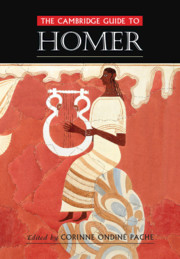Book contents
- The Cambridge Guide to Homer
- The Cambridge Guide to Homer
- Copyright page
- Contents
- Figures
- Notes on the Contributors
- General Introduction
- Part I Homeric Song and Text
- Part II Homeric World
- Part III Homer in the World
- Introduction
- Homer in Antiquity
- Homer and the Latin West in the Middle Ages
- Homer in Greece from the End of Antiquity 1: The Byzantine Reception of Homer and His Export to Other Cultures
- Homer in Greece from the End of Antiquity 2: Homer after Byzantium, from the Early Ottoman Period to the Age of Nationalisms
- Homer in Renaissance Europe (1488‒1649)
- Homer in Early Modern Europe
- The Reception of Homer since 1900
- Homer: Image and Cult
- Key Topics
- Bibliography
- Index
- References
Homer in Renaissance Europe (1488‒1649)
from Part III - Homer in the World
Published online by Cambridge University Press: 22 February 2020
- The Cambridge Guide to Homer
- The Cambridge Guide to Homer
- Copyright page
- Contents
- Figures
- Notes on the Contributors
- General Introduction
- Part I Homeric Song and Text
- Part II Homeric World
- Part III Homer in the World
- Introduction
- Homer in Antiquity
- Homer and the Latin West in the Middle Ages
- Homer in Greece from the End of Antiquity 1: The Byzantine Reception of Homer and His Export to Other Cultures
- Homer in Greece from the End of Antiquity 2: Homer after Byzantium, from the Early Ottoman Period to the Age of Nationalisms
- Homer in Renaissance Europe (1488‒1649)
- Homer in Early Modern Europe
- The Reception of Homer since 1900
- Homer: Image and Cult
- Key Topics
- Bibliography
- Index
- References
Summary
This essay surveys key editions and translations of the Homeric corpus in the two centuries after the advent of print and also studies the evolution of Homeric commentaries and scholarly apparatus during the European Renaissance. Examining both Latin and vernacular translations, the essay identifies key trends as well as idiosyncrasies in the era’s attempts to render Homer’s Greek readable to a wide audience and also examines some of the ways in which Homer’s poems were interpreted and repurposed, ranging from discussions of Homeric emotion and the theological implications of the Homeric gods to the circulation of Homeric verses in maxims and sententiae.
- Type
- Chapter
- Information
- The Cambridge Guide to Homer , pp. 490 - 504Publisher: Cambridge University PressPrint publication year: 2020

